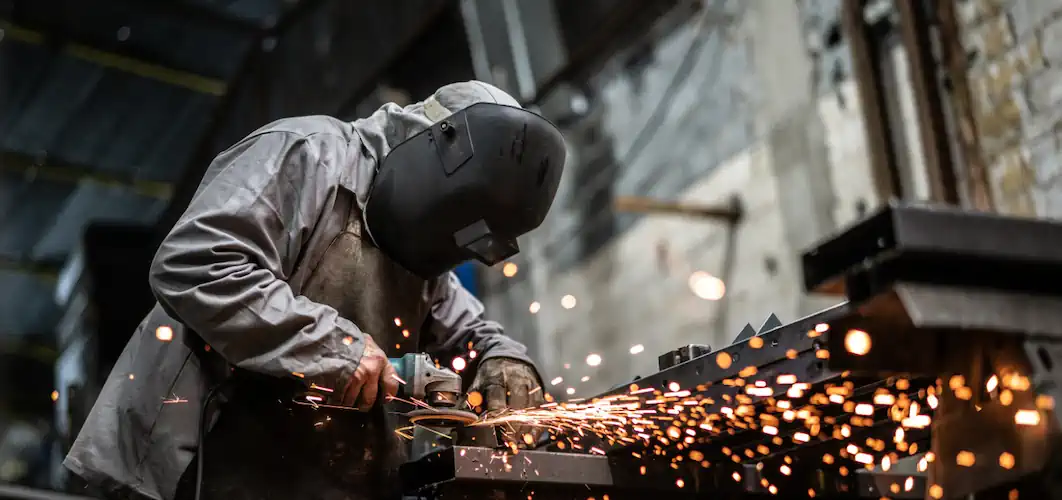Flame-Resistant vs. Flame-Retardant:What's the Difference and Why It Matters
To ensure the ultimate level of protection, employers in high-risk environments (fire, sparks, burns) should be provided with flame-resistant garments or fabrics with high heat ratings.
Understanding the key difference between inherently flame-resistant materials and those treated with flame retardants is crucial. By equipping workers with the right fire-resistant gear, employers can significantly safeguard them against potential dangers.

Table of Contents
1. What Does ‘Flame-Resistant’ Mean?
2. What Does ‘Flame-Retardant’ Mean?
3. How Do ‘Flame-Resistant’ Materials Work?
4. How Do ‘Flame-Retardant’ Materials Work?
5. Choosing the Right Protection: Flame-Resistant vs. Flame-Retardant Materials?
What Does ‘Flame-Resistant’ Mean?
Flame-resistant materials are designed to self-extinguish when exposed to fire, preventing the spread of flames. They have inherent properties that make them resistant to ignition and combustion. These inherently resistant materials do not easily catch fire. When exposed to a flame, it will char or melt away from the heat source, effectively cutting off the oxygen supply and preventing the fire from spreading further.
What Does ‘Flame-Retardant’ Mean?
Flame-retardant materials are treated with chemicals to slow down the combustion process, reducing the risk of ignition and delaying the spread of flames. These chemicals release flame-inhibiting gases or form a protective layer that prevents oxygen from reaching the fuel source. Over time, the chemicals will wash out of the garments, decreasing the level of protection provided.
Flame-retardant materials help minimize fire and explosion risk and provide valuable time to evacuate or suppress the fire.
How do ‘Flame-Resistant’ Materials Work?
Flame-resistant materials utilize the inherent properties of the fibers from which they are made. These fibers have a high resistance to heat and do not easily catch fire. When exposed to a flame, it will shrink away from the heat source, effectively cutting off the oxygen supply and extinguishing the fire. Flame-resistant fabrics are introduced to flame-resistant chemicals to give them that protection.
Meta-Aramid Fibers:
One common type of flame-resistant material is meta-aramid, which is often used in protective clothing for firefighters. Meta-aramid fibers have a high melting point and do not ignite easily. When exposed to flames, they undergo intumescence, a process where they swell and form a protective char layer. This char layer acts as a barrier, preventing the flames from reaching the underlying material and providing valuable time for firefighters to escape or suppress the fire.
Para-Aramid Fibers:
Another widely used flame-resistant material is para-aramid, known for its exceptional strength and heat resistance. Para-aramid is commonly used in bulletproof vests, industrial gloves, and heat-resistant clothing. When exposed to flames, para-aramid fibers do not readily burn or melt. Instead, they decompose at high temperatures, releasing inert gases that dilute the oxygen concentration and prevent further combustion.
Silicone Rubber:
Silicone rubber is a synthetic elastomer that exhibits excellent resistance to heat and flame. It is often used in high-temperature applications, such as automotive components, electrical insulation, and protective coatings. Silicone forms a stable oxide layer upon exposure to fire, which acts as a barrier to prevent further heat transfer and combustion.
Fiberglass:
Another such material is fiberglass. Fiberglass is a lightweight and durable material made from glass fibers. It is commonly used in insulation, construction materials, and protective clothing. Fiberglass is inherently flame-resistant because glass itself does not burn. When exposed to fire or high temperatures, it may soften or deform but does not contribute to the fire or release toxic gases.
How do ‘Flame-Retardant’ Materials Work?
Flame-retardant fabrics or materials, as mentioned earlier, are treated with chemicals to slow the combustion process. These chemicals can be applied to the material during manufacturing or post-treatment. There are different types of flame retardants, each with its unique mechanism of action.
Halogen Compounds:
One common type of flame retardant is halogen-based. Halogen compounds, such as bromine or chlorine, release flame-inhibiting gases upon exposure to heat or flames. These gases dilute the oxygen concentration around the fuel source, making it harder for the fire to sustain itself. Halogen-based flame retardants are often used in plastics, electronics, and building materials.
Phosphorus Compound:
Another type of flame retardant is phosphorus-based. Phosphorus compounds react with the material during combustion, forming a protective layer of char that acts as a barrier against the flames. It is commonly used in flame retardant sprays, textiles, and foam materials.
Intumescent Flame Retardant:
Additionally, intumescent flame retardants form a protective char layer when exposed to flames. These flame retardants are often used in paints, coatings, and wood treatments. When heated, the intumescent flame retardant expands, forming an insulating layer that protects the underlying material from the heat and flames.

Choosing the Right Protection: Flame-Resistant vs. Flame-Retardant Materials?
Fire accidents can have devastating consequences, resulting in property damage, injuries, and even loss of life. Incorporating flame-resistant and flame-retardant materials into various industries and applications can significantly reduce the risk of fire-related incidents.
Flame-Resistant:
Flame-resistant materials are essential for workers in high-risk environments, such as firefighters, welders, and electrical technicians. These materials provide a last line of defense against flames and heat, allowing individuals to perform their duties safely. In industries where hazardous materials are present or where there is a high potential for fire outbreaks, flame-resistant materials are a necessity.
In high-risk industries, where workers are exposed to flames, heat, and hazardous materials, selecting flame-resistant materials that meet the appropriate standards is essential. These materials provide a reliable layer of protection and can mean the difference between life and death in emergencies.

Flame-Retardant:
Flame-retardant materials, on the other hand, are crucial for ensuring fire safety in everyday settings. Whether in our homes, offices, or public spaces, using flame-retardant materials helps minimize fire risk and gives people valuable time to escape during emergencies. These materials are valuable in buildings where large numbers of people gather, such as schools, hospitals, and shopping malls.
For everyday settings, such as homes and offices, using fire-retardant materials can significantly enhance fire safety. Selecting furniture, curtains, and other household items that have been treated with flame retardants can provide valuable time for evacuation and increase the chances of survival in case of a fire.
Ultimately, the right choice between flame-resistant and flame-retardant materials depends on the specific fire safety needs and regulatory requirements. Consulting with fire safety experts, such as fire engineers or safety consultants, can provide valuable insights and guidance in making informed decisions. Adding this to your arsenal of aluminized fire suit and proximity suit can further improve worker safety.
Choose Wisely Between Flame-Resistant vs. Flame-Retardant Necessities
Understanding the critical distinction between flame-resistant and flame-retardant materials is crucial for effective fire safety. While both types of materials contribute to minimizing fire hazards, they have distinct characteristics and applications.
By prioritizing safety and incorporating flame-resistant or flame-retardant materials into various industries and applications, we can significantly reduce the risk of fire-related incidents and protect lives and property. Whether you're a construction professional, a firefighter, or simply interested in fire safety, understanding the distinction between flame-resistant vs flame-retardant materials, and choosing the appropriate PPE for such situations, empowers you to make informed decisions and safeguard against potential dangers.






















